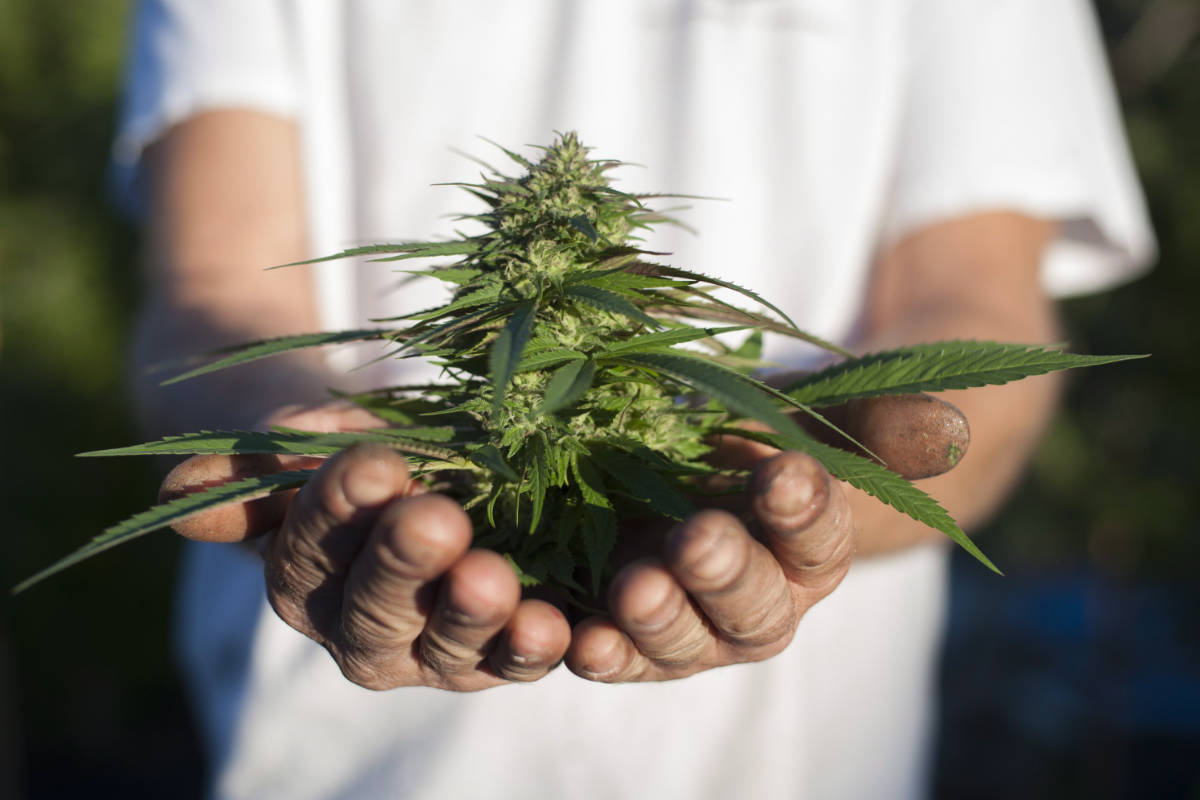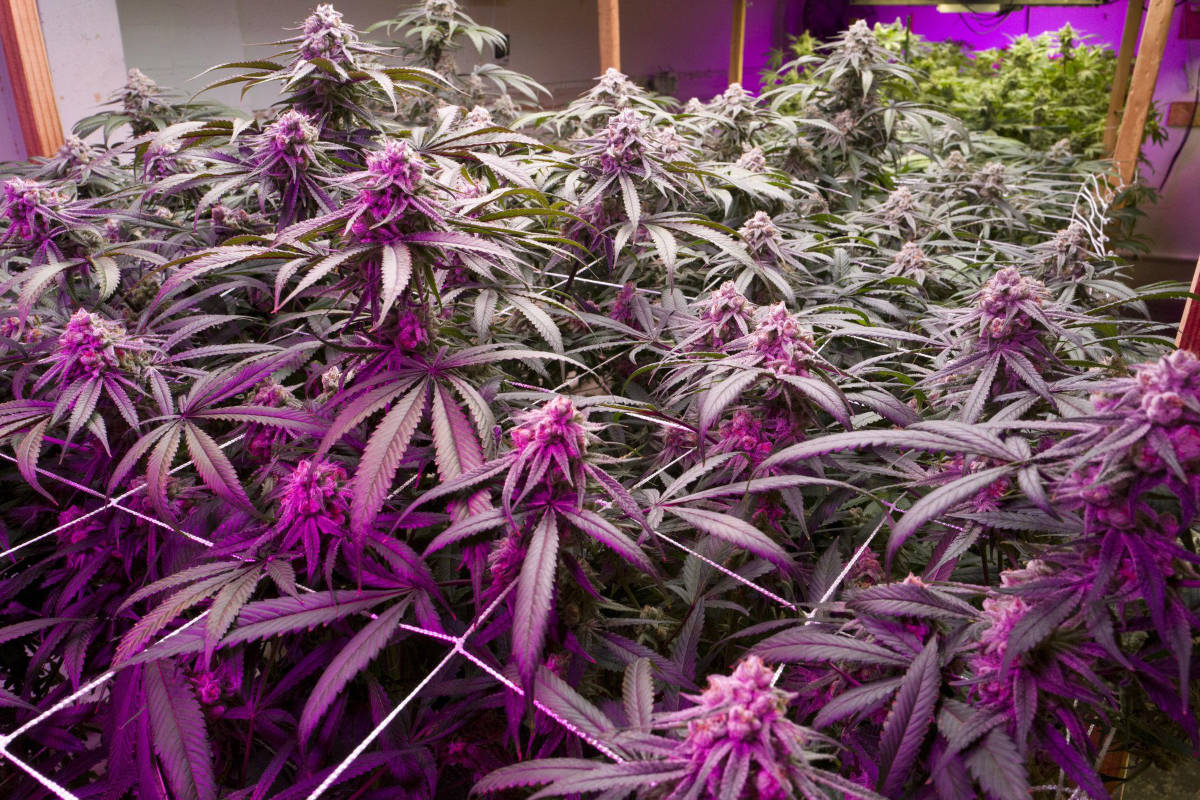As harvest time approaches, what’s the best way to maximize yield? What are some of the tricks of the trade?
Cannabis writer Salina May has prepared this guide:
Summer is winding down, and for many Canadians it is time to harvest their first or second outdoor cannabis garden since the plant was legalized for home growing in most provinces in October 2018. You’ve fed and watered those plants all summer, protected them from hail and storms and insects and wildlife, and now it is time for the final effort of harvesting the plants so their bounty may be enjoyed. But before you start guessing yields and breaking out the rolling papers, there are some things that the home outdoor grower should think about for a successful and plentiful harvest.
Harvest Timing
There is an abundance of information about harvesting outdoor plants available on the internet, but a great deal of this comes from temperate areas of the USA and do not account for Canada’s shorter growing season, or the diversity of growing conditions across this vast country. Those in warmer coastal areas may be able to wait until after the fall equinox on Sept. 22, which is often recommended as the beginning of harvest season for cannabis. However, in many northern areas heavy frost can settle in earlier and will risk damaging your outdoor plants, or there can be other weather or climate concerns that can determine when you should harvest. (For example, you may want to harvest earlier in areas expecting a rainy fall to prevent mold or bud rot from setting in.) Harvest timing will also depend on whether you are using autoflower or photoperiod cannabis, what latitude your garden is, how long the days and nights are, if insects or disease are attacking the plants, which strain you are growing and what its typical growing season is. Harvesting the plants too soon can be a temptation, but if you cut them down too early you risk losing out on a significant amount of overall weight and quality of the buds.
One sign that your plants are ready for harvest is that most of the tiny hairs on the buds (pistils) will have changed from white to a red or deep orange hue. Or, for a better indication of the harvest readiness of the plants, cannabis seed producer Dutch Passion recommends using a magnifying glass to determine if the normally clear trichome resin glands on the buds have become cloudy, signalling ripeness. Some growers will also suggest waiting to harvest until after a light frost (although this is not a universally accepted practice), as the cold temperatures can promote deepening of colours such as reds and purples in the buds, enhancing their visual appeal, as well as potentially increasing the cannabinoid contents of the bud, resulting in higher quantities of cannabinoids such as THC, CBD, CBG, etc.Oh Deer! Someone’s been munching my plants!
If you are growing in a rural area or an area prone to visitation by your local deer population, your plants may be at risk of being devoured by these timid herbivores, which may also influence the decision on when to harvest your cannabis plants to protect them from wildlife. The good news is that while deer may be very interested in eating younger marijuana plants, they find more mature plants less desirable. So deer should be less of a threat to flowering plants, although deer populations have been reported to eat plants right up until harvest time, according to cannabis seed producer Royal Queen Seeds. To be on the safe side, you could try one of many suggested deer repellents- The Weed Blog website recommends physical deterrents such as motion detecting sprinklers or electric fences, or scent repellents such as human hair, garlic, predator urine, and fabric softener sheets. The verdict is out on whether deer are attracted to cannabis plants due to psychoactive effects or if it is just part of their diet, and Royal Queen Seeds reports that some animal researchers don’t believe deer (or other animals) are typically affected by THC in the raw leaves and stems as it has not been decarboxylated (or heated up), which changes the THC compounds into activated compounds with psychoactive properties (such as experienced by humans from smoking, vaping, or baked edibles). Whether the deer are having a psychonautical experience or just being herbivores, taking preventative measures to ensure they are not threatening your garden is probably prudent.
Putting in the Work
You have worked hard all spring and summer to nourish your cannabis plants, and now that it’s harvest time you just want to pull out the vaporizer and enjoy the fruits of your labour, but more time and effort are required at this stage.
Harvesting, trimming, and curing are all labour- or time-intensive and must be done well to optimize the enjoyment of your home-grown cannabis. The website, I Love Growing Marijuana (www.ilovegrowingmarijuana.com), has a number of tips for new growers for a successful harvest:
- Invest in good trimmers/scissors that can cut thick stems and can also do finesse work
- Have isopropyl alcohol on hand to clean accumulating resin from your tools
- Make sure you have proper time and security for trimming and drying the plants (no one wants their efforts thwarted by thieves stealing the finished product.)
- Make sure to trim the leaves carefully and remove any bugs such as aphids as much as possible, as these can reduce the quality of the final product.
- Watch for seeds, as even feminized plants can produce some seeds without pollination, so be sure to remove as many as possible while trimming, and store for planting next year.
- Dry the trimmed buds, still on the stems, by hanging them upside down in a clean dark room free of insects, dust, and hair, ideally with storage at a relative humidity of 50-65% and temperature between 15°C and 21°C, according to advice from the website Grow That Weed.
- Heat and sunlight will break down THC, so try to avoid both during the trimming and drying stages. Dutch Passion Seeds suggests drying the hanging buds for 5-7 days before putting them into clean glass jars where they can cure up to a few weeks, opening the jars occasionally to let out any excess moisture.
- Once the buds have cured, they are ready for optimal enjoyment.
Growing your own outdoor cannabis can be a challenge and requires knowledge and effort, so be sure to put in the final effort required for harvest so as not to let that hard work go to waste!
As many people feel about gardening, there is nothing as satisfactory and rewarding as enjoying the products from plants that you grow yourself, and as many Canadians are finding, having the freedom to grow your own cannabis plants outdoors is one of life’s simple yet highly fulfilling pleasures.


